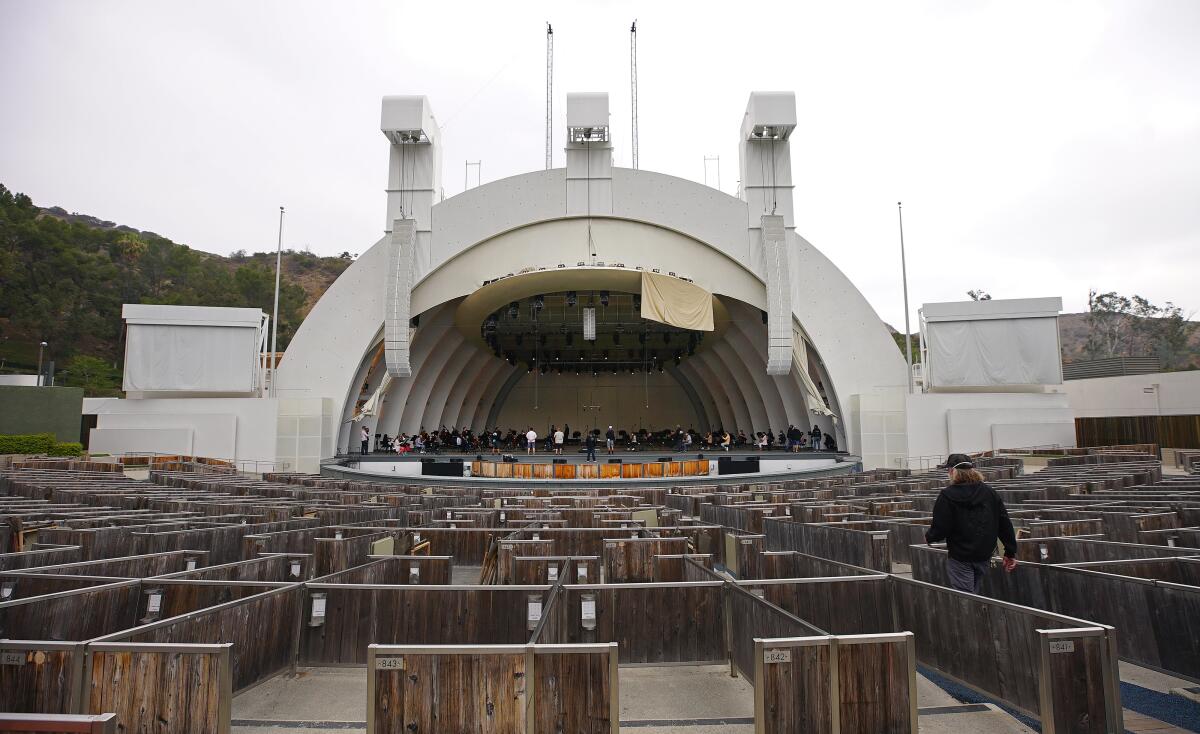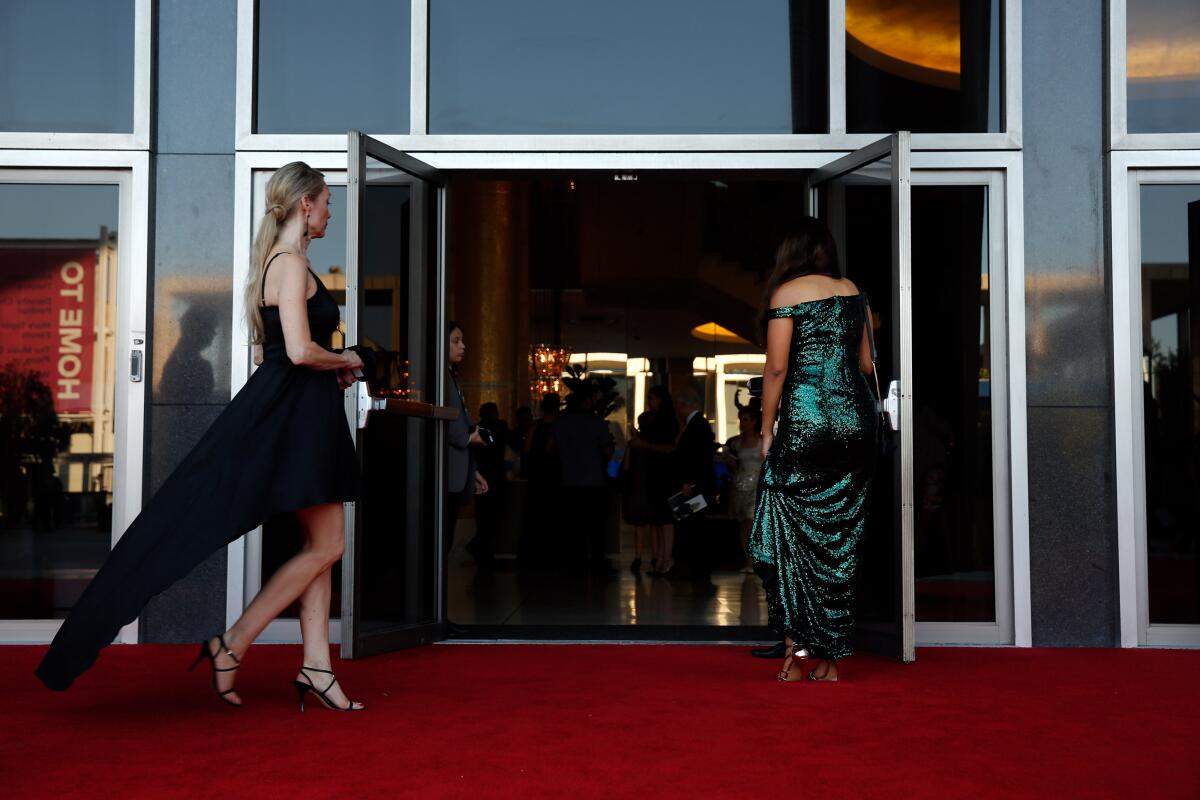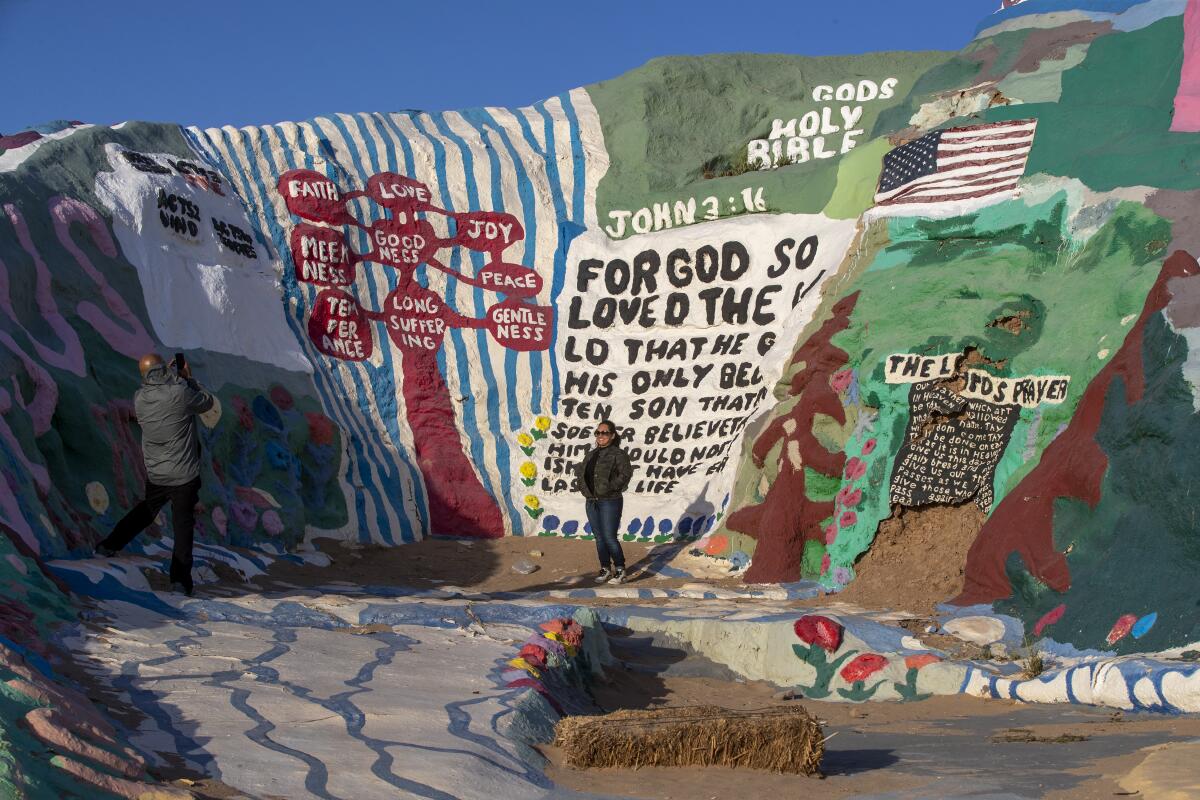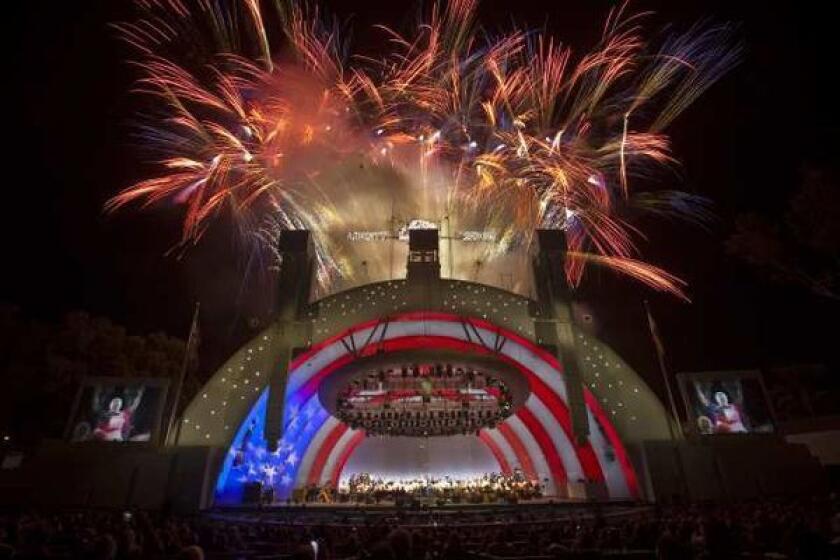Essential Arts: What the CDC mask guidelines mean for L.A.

- Share via
Hey y’all, I’m Times arts reporter Makeda Easter, taking over for my colleague Carolina A. Miranda this week with the rundown on everything that was essential in arts.
After more than a year of mask mandates, going anywhere without a facial covering feels a bit like going grocery shopping without shoes. I feel very exposed. But it may be time to start getting readjusted.
On Thursday the U.S. Centers for Disease Control and Prevention announced a sweeping relaxation of face mask guidelines: If you’re fully vaccinated against COVID-19, no need to wear a mask in most places outside or indoors.
Across Twitter, reactions are mixed, and many say they plan to continue wearing masks even though they’re fully vaccinated. There also were questions: How will these guidelines be implemented? How will we know who is vaccinated and who isn’t? What about families with young children who aren’t yet vaccinated?
And what does that mean for the arts — the museums, theaters, concert halls and dance stages across L.A. that have reopened or are planning their returns?
Times staff writers Jessica Gelt and Deborah Vankin reached out to local institutions including the Hammer Museum, Wallis Annenberg Center for the Performing Arts, Los Angeles County Museum of Art, Center Theatre Group, the Soraya and Los Angeles Master Chorale. Reactions to the CDC announcement included comments like “encouraging,” and “promising.” Because the CDC’s mask recommendations were only guidelines, the majority of arts groups The Times contacted said they will still require audience members to wear masks until more guidance comes from state and L.A. County officials.
A Times reporter was on the phone with one L.A. arts group performing this weekend when the CDC news alerts started landing. “Uh, I gotta go,” the representative said, heading off to ride another curve on the roller coaster of reopening.
In Orange County, the CDC announcement “came as a bit of a surprise,” said Casey Reitz, president of the Segerstrom Center for the Arts. “We have been anxiously waiting on guidance, on the protocols that will be in place for the planned June 15 reopening of California, so we can put the proper systems in place to keep our staff, artists and patrons safe.”
Vaccinated people will get 85% of the tickets for the Bowl’s 2021 season, which includes Christina Aguilera, Yo-Yo Ma and “Black Panther” live.
At Autry Museum of the American West, the staff was less startled.
“Something seemed to be about to bubble up as people continue to get vaccinated. It’s only natural there’d be a relaxation around masking at some point,” communications director Chris Dzialo said.
Since reopening to members March 30 and to the general public April 6, the Autry said patrons have been largely respectful of mask policies, “and we expect that to continue,” Dzialo said.
Will enforcing mask rules present a new challenge given the conflicting federal and local guidelines? The Music Center won’t require proof of vaccination or COVID-19 testing at its upcoming outdoor “Dance at Dusk” performance series, which begins this month, “and will continue to ask folks to keep their mask on for the time being,” said President and Chief Executive Rachel S. Moore.
This week, Jessica Gelt reported on Hollywood Bowl’s reopening after an 18-month COVID-19 closure. For the 2021 Bowl season, 85% of seats will be reserved for those who have been fully vaccinated. The rest must show proof of a negative COVID-19 test within 72 hours of a performance. Although the process for verification is not fully solidified, the Bowl anticipates implementing a digital system over the summer.
“From a public health standpoint we need to be encouraging people to get the vaccine. It’s the safest way for our community to bounce back,” Chad Smith, chief executive of the Los Angeles Philharmonic, told Gelt.

Gelt also reported on Los Angeles Opera’s upcoming free indoor performance of “Oedipus Rex,” moved from outdoors to inside the Dorothy Chandler Pavilion. Audience members will be required to show proof of full vaccination or negative results from a COVID-19 test taken within 72 hours before the show.
Ann Burroughs, president and chief executive of the Japanese American National Museum, noted that it will be difficult to verify who is fully vaccinated, so the museum will continue with its COVID-19 protocols, including a mask requirement indoors and additional sanitizing.
The CDC’s new guidelines probably won’t change East West Players’ timeline for returning to in-person shows, said Producing Artistic Director Snehal Desai. “But it certainly bolsters momentum and confidence towards reopening in the next year.”
The announcement was a joyous moment for Ben Cadwallader, executive director of Los Angeles Chamber Orchestra. “The light at the end of the tunnel has been getting brighter for months, and with this new relaxed mask mandate, we’ve left the tunnel and stand together in the sweet sunshine once again.”
Here’s more arts news across L.A. this week.
Welcome back, L.A. summer
Last summer the Hollywood Bowl canceled its entire season for the first time in nearly 100 years. Now, the historic L.A. venue returns. Jessica Gelt attended a reopening rehearsal to understand how the Bowl was preparing for the momentous occasion.
“Our production department is staging high-caliber performances in a fundamentally changed environment,” L.A. Phil Chief Executive Smith said. “You have to reexamine everything you take for granted because the protocols demand it.”

The Bowl returns Saturday with the first of several free performances for invited frontline workers by L.A. Phil and conductor Gustavo Dudamel. July 3 and 4 mark the official public kickoff with fireworks and Kool & the Gang. Also in the summer lineup: Cynthia Erivo, Yo-Yo Ma repeating his Bach cello suites feat, Christina Aguilera, Viola Davis narrating “Peter and the Wolf,” pianist Jean-Yves Thibaudet, “Black Panther” performed as the Bowl’s first Marvel live-to-picture screening, plus “Harry Potter and the Half-Blood Prince in Concert.”
The MOCA mystery
Some Museum of Contemporary Art staffers are asking who’s in charge after the museum announced it was restructuring, moving director Klaus Biesenbach into the role of artistic director and looking to hire an executive director to co-run the institution with him. Deborah Vankin spoke to more than two dozen people including current and former MOCA employees, artists, curators and executives at other museums to understand the impact of the decision.
“Some said two cooks in the kitchen would inevitably lead to conflict; others questioned whether the unusual structure is something of a smokescreen — if, in fact, MOCA is demoting Biesenbach to a role similar to chief curator,” Vankin writes. “Will the new executive director really be holding the reins at the institution, which has seen four directors in 13 years?”
Things to do
As always, listings coordinator Matt Cooper has the scoop on some of the most exciting in-person and streaming events. This weekend, the Skirball Cultural Center partially reopens with “Ai Weiwei: Trace,” showcasing the artist and activist’s Lego portraits of imprisoned dissidents and free-speech advocates. If you want to learn more about the exhibition, check out art critic Christopher Knight’s 2014 review of the work.
Skirball Cultural Center reopens with Ai Weiwei portraits of political dissidents, and the L.A. Phil streams its return to the Hollywood Bowl.
What do we do with intermissions?
Are intermissions on their way out? Theater critic Charles McNulty makes a case for uninterrupted viewing, including eliminating unnecessary crowding in lobbies during a pandemic. He consulted with playwright and director Robert O’Hara, whose play “Barbecue” uses the intermission as a tool to deliver a shock to audiences.
“We sit through two-and-a-half-hour movies without intermissions, so I see no reason why we need to throw an intermission into a work just because it’s two hours long,” O’Hara told McNulty.
McNulty also reviews a benefit reading of Larry Kramer’s “The Normal Heart,” featuring “This Is Us” actor Sterling K. Brown and “Orange Is the New Black” star Laverne Cox.
In other news
Broadway lovers, get ready for fall. “Hamilton,” “Wicked” and “The Lion King” return to Broadway on Sept. 14. “Moulin Rouge! The Musical” comes back Sept. 24. “The Phantom of the Opera” is slated to return Oct. 22.

Times reporter Priscella Vega explores COVID-19’s impact on Slab City, the dusty compound near the Salton Sea, which locals call the “last free place in America.”
Latinx art curator and acting chief curator at the Smithsonian American Art Museum E. Carmen Ramos has been named chief curator at the National Gallery of Art in Washington, D.C. She is the first woman and first person of color to hold the position.
And a good read
I recently was mesmerized by “I’m No Longer Here” (“Ya no estoy aquí”), a Netflix film centered on the electronic cumbia scene in Monterrey, Mexico. Check out Times reporter Kate Linthicum’s interview with the film’s star, who became one of the most recognizable faces in Mexico overnight.
The biggest entertainment stories
Get our big stories about Hollywood, film, television, music, arts, culture and more right in your inbox as soon as they publish.
You may occasionally receive promotional content from the Los Angeles Times.





